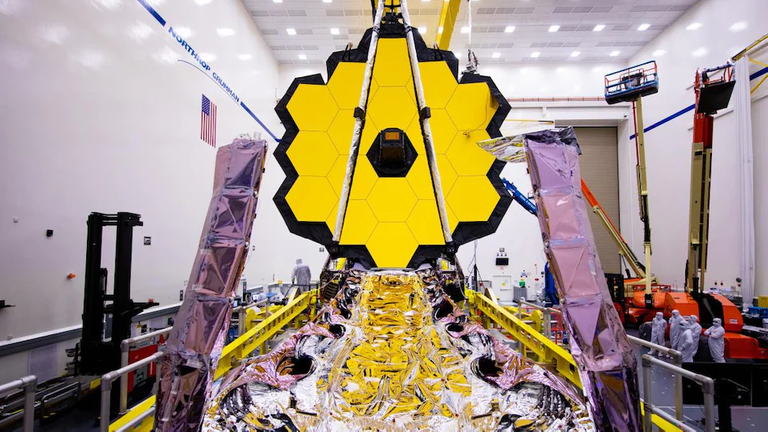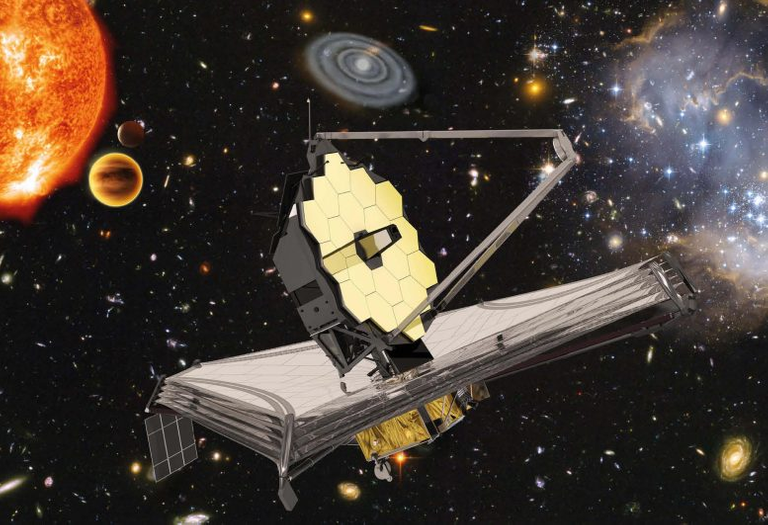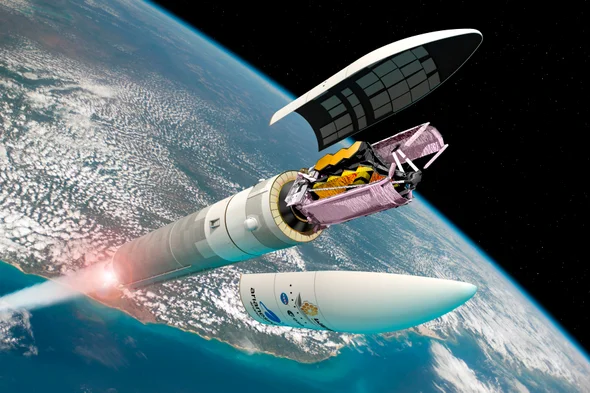How James Webb Telescope will unlock universe’s secrets?
Astronomers still do not know much about the origin of the universe and its structure, how and why it was created and formed. The James Webb Telescope is designed to discover how the universe's earliest massive explosion occurred shortly after, and to uncover the secrets of the first stars and galaxies to form in the process.

The James Webb Space Telescope will be the largest and most practical performance model of all space telescopes to date, so astronomers and scientists have high hopes for this telescope. The world's first time machine may not take you on a journey through the past or the future, but it does have the potential to unravel the story of the birth and formation of our universe because it is equipped with the latest technologies.
In fact, this space telescope is capable of looking into the past, so it is being interpreted as the world's first time machine, the most important tool of which is to observe it with invisible rays which are called "infrared" rays. It will also provide information about exoplanets associated with other stars in the universe and could detect possible life on them. The planets in the star system other than our solar system are called Exoplanets.
After an explosion of radiation, the light travels hundreds of millions of years, and this initial light coming from the fog becomes very dim. James Webb is called a time machine because if a body is ten thousand light years away, it means that it will be able to reach our earth ten thousand years later, traveling at the speed of light.
This means that if an event takes place in the universe in the past, then the news of it reaches us thousands of millions of years later. To understand the universe it is necessary to know the nature of light where the most important thing is light which has had many theories in the past. The nature of light waves is like that of magnetic waves which consist of fast moving electromagnetic fields and do not require any intermediaries. The most authoritative is the theory of light given by the 20th century scientist, Max Planck, known as the "quantum theory".
According to this, light is emitted in the form of energy of individual packets which are called "photons". Each photon has its own energy which depends on the frequency of light. It has dual properties, consisting of particles and waves. White light is a combination of seven colors. The appearance of these seven colors of light is called "spectrum of light".
A particle completes one vibration at a particular time in any medium and the distance it travels is called wavelength. Different radio frequencies are divided into bands on the same principle. Radio astronomy began with the development of satellites, and these radio telescopes are modern astronomical instruments. The Hubble Space Telescope orbits the Earth like a satellite in space.

It is named after the astronomer Edwin Hubble who put the Big Bang theory into practice. It was the most expensive telescope ever, with a budget of $7 million, and took ten years to build. The spacecraft was delivered to space on April 25, 1990. It suffered a malfunction in 1993 that was corrected and its performance has been disrupted several times.
Hubble, through his 31 years of service, has radically changed ancient notions of space and the universe, and has made astonishing discoveries. It was updated in 1997 and has sent thousands of images to the ground station. The first Hubble has been likened to a time machine, but the recent James Webb deserves to be called a time machine because of its high utility. This telescope will help to understand how the planets came into being.
The first possible evidence of an exoplanet was found in 1917 which could not be confirmed. Whereas a planet observed in 1988 was discovered which was confirmed in 1992 and as of December 1, 2021, 4,878 extrasolar planets have been detected, of which 3,604 have been confirmed, including 807 star systems which have at least one planet.
The James Webb Space Telescope is named after former NASA administrator James Edwin Webb, who served at NASA from 1961-1969 and was instrumental in the Apollo space program. Initial work on James Webb began in 1996, but there were major delays in the project, which was redesigned in 2005. In 2007, it was estimated at $500 million. Although this telescope was developed in 2016, the testing phases were launched in 2018. When completed, the telescope is estimated to cost $14 billion.
The James Webb telescope will be placed in orbit around the sun 1.5 million kilometers or one million miles away from the Earth's closest orbit. This is the second point of the Large range called L2. At this point, the telescope will travel around the sun, attached to the earth. it is15 times wider than Hubble in terms of its ability to see. 18 Hexagonal Mirrors are made by combining individual six-dimensional mirrors that can receive six times more light.

Today's astronomers use the James Webb Telescope to make tremendous observations, to study the important universe of that enchanting and deceptive age and to find out when that first light appeared there and then how the stars and galaxies appeared.
Thank you for reading! Stay Safe!👋😌
References:
Such a complex project! And apparently is working great so far, hope it changes our imaginary of the universe more and for longer than Hubble did!